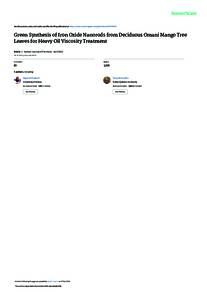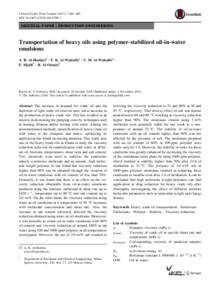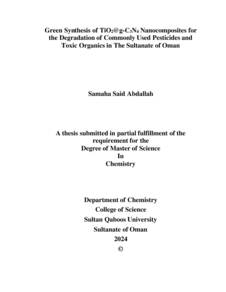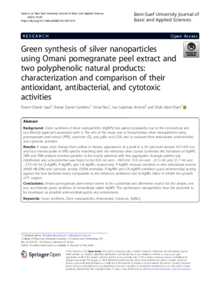Document
Green synthesis of iron oxide nanorods from deciduous Omani mango tree leaves for heavy oil viscosity treatment.
Identifier
DOI: 10.1016/j.arabjc.2016.04.003
Source
Arabian Journal of Chemistry. v. 12, 8, p. 4084-4090
Contributors
Mohiuddin, Tariq., Author
Al-Saadi, Liayla K. , Author
Country
Switzerland
City
Amsterdam
Publisher
Elsevier B.V.
Gregorian
2019-12-01
Language
English
Subject
English abstract
Green synthesis of iron oxide nanorods were achieved by utilizing rich polyphenols in Omani mango tree leaves as a reducing agent. The obtained Iron (III) oxide nanorods (IONRs) were (15 ± 2) nm in average length and (3.0 ± 0.2) nm in average diameter. These nanorods were polycrystalline in structure with different diffraction planes indicating the presence of a specific type of IONRs which are alpha phase, hematite (α-Fe2O3) and gamma phase, maghemite (γ-Fe2O3). The relatively smaller size, distribution, and heat conversion make the obtained nanorods a good candidate for heavy crude oil cracking process. Direct microwave radiation causes a reduction in dynamic viscosity of crude oil due to the presence of dipole water molecules. The viscosity reduction rate was found to be higher when impregnated IONRs nanorods were placed within the heavy oil. The viscosity was reduced by 10% when 0.2 g of IONRs was added to 1 L of heavy oil at T = 30 °C. This reduction increased up to 38% and 49% when 0.4 and 0.6 g/L additives were added respectively at the same temperature. However, when 0.8 g of IONRs is added to the heavy oil no noticeable change in the viscosity was found, indicating the oils’ additive saturation point.
ISSN
1878-5352
Category
Journal articles





